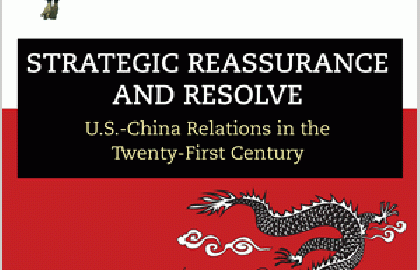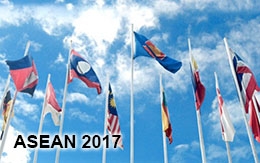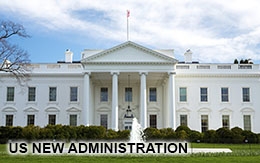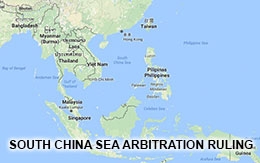Strategic Reassuarance and Resolve: U.S.- China Relations in the 21st Century (Book Review)
As professional foreign policy makers and analysts with profound experience on and close observation of US-China relations, James Steinberg and Michael O’Hanlon have provided a relatively generalized strategic perspective about as well as detailed and practical suggestions for the implementation of Sino-US relations in the 21st century.

Ever since the US and Chinese leadership announced their intention to build ‘a new type of great power relations’ between the US and China, policy analysts in both countries have relentlessly tried to explore the origins, meanings, as well as the practicality of this initiative. In their dual capacity as policy analysts who have spent many years observing US and Chinese foreign policies and the stages of development in US-China relations, and at the same time, as those directly involved in the making and managing of US policy toward Asia in general and China in particular, James Steinberg and Michael O’Hanlon, in their recent book titled ‘Strategic Reassurance and Resolve: U.S.-China Relations in the Twenty-First Century’ (Princeton: Princeton University Press, 2014), are interested in and and have tried to provide their own suggestions for the construction and implementation of such new type of US-China relationship.
Taking an inside angle and a relatively realistic approach, the two authors introduce a handbook which provides not much theoretical but practical insights. This book can serve as an interesting reference for those who are involving in the debate over US strategy in the context of China’s rise and in the management of Sino-US relationship.
Strategic Reassurance and resolve: US-China Relations: A formula combining compromise and decisiveness
Although they did not analyze in details the connotation of US-China ‘new type of great power relations’, Steinberg and O'Hanlon have nonetheless provided a general vision for this model. Accordingly, they suggest that the US and China should cultivate on ‘a constructive relationship’ rather than purely pursuing the principle of ‘peaceful co-existence’ which was once implemented during the Cold War. It is, of course, not easy to realize this goal. In the first section of the book, Steinberg and O'Hanlon assess the reality of Sino-US relations, the causes of conflict in the bilateral relations as well as the factors shaping the strategic choice of each side which need to pay attention to in the process of constructing US-China relationship in the future.
Although China has benefited to some extent from the existing US-led international order, Steinberg and O'Hanlon also point out that there exist many issues in the bilateral relations that may become ‘the source of conflict’. These include US involvement in the Taiwan strait, the East and South China Seas, the existence of US alliance system in Asia, US inclination for use of force in issues related to national sovereignty such as Kosovo, Iraq, and Libya, US pressure on the EU to prolong the arm embargo on China, US dominance in the international political economy and associated pressure on Chinese economy, differences between the two countries in term of strategic culture and regime, as well as the rise of nationalism in China and the prescriptive sentiment toward each other.
Although Sino-US relations have both favourable and unfavourable conditions for the successful construction of a new model of bilateral relationship, Steinberg and O'Hanlon point out that it is the strategy adopted by the two sides in resolving issues related to the other side that will determine the future of Sino-US relations. In specific, the factors that will shape the two sides’ strategy include how they define national interests, their traditions of strategic culture, domestic politics, as well as the strategic thinking of the other sides. Among these factors, Steinberg and O'Hanlon’s comments on the strategic culture of the US and China is perhaps most significant and interesting as it may serve as a springboard for changes in strategic thinking of the two sides as they suggested.
Steinberg and O'Hanlon express their optimism in China’s strategic choice, not only because the current Chinese leadership often praises the image of Admiral Zheng He of the Ming dynasty with his ‘peaceful’ explorations in the 15th century as a model for a strategic culture that upholds the establishment of order by means of disseminating China’s Confucian culture and the wisdom of Sun Tzu’s art of war by “obtaining victory without use of force”. More importantly, as many analysts have ascertained, Chinese leaders truly understand the value of Confucian thought: by committing to those ideas of harmonious development and restricted use of force, the Chinese communist party can reaffirm the legitimacy of its regime by inheriting those widely recognize principles embedded in traditional thoughts with no relevance to communism or the pure control of power. In addition, the two authors also quote some sources positing that China, with its announcement to pursue a ‘peaceful development’ guideline, has avoided creating a ‘pretext’ for other countries to seek balancing against China. By so doing, China has also imposed its own standards and restrictions of behaviors.
The two American analysts, however, are less optimistic about the possibility for a US best choice of strategy given that the endless debates on the need for the US to secure its primacy on the international arena, on the future of American values, and on the linkages between security and economy etc. continues to hinder a consensus on the US decision making. Steinberg and O'Hanlon describe in details these controversies so as to build a foundation for the three main approaches that are often put forwarded in American domestic debates about the handling of the China challenge.
These are namely (i) striving to prolong the US supremacy over China, making China have no choice but to accept the status quo in international order; (ii) strengthening alliances with China’s neighbors, and at the same time, facilitating cooperation among these countries so as to preserve the regional strategic balance in the US favor; and (iii) boosting cooperation with China to maintain a channel to directly exert impact on Chinese leadership and encourage China to play an active role in regional and international peace and security. Among these, the first and second approach focus on ensuring US strategic supremacy over China. These perspectives have its roots in the US traditional considerations stemming from its own development history with regard to the lessons and consequences of compromises with rising power, the national exceptionalism and the need to absorb American values in foreign policy, and the importance of the preponderance of forces and technology in the prevention and fight against security threats. Nonetheless, Steinberg and O'Hanlon posit that it is these considerations and those approaches emphasizing on the ‘supremacy’ of American power that create a psychology for confrontation in Sino-US relations and thus bringing this relationship into a deteriorating orbit.
What then is American best option? The formula put forward by Steinberg and O'Hanlon is the combination of accommodating behavior toward China and the decisiveness in those issues related to American core interests. Accordingly, the US needs to reassure China about the US goodwill for cooperation, and at the same time manifests its capability and resolve in protecting American core interest in order to pre-empt intentions to challenges those interests. The ‘resolve’ toward China is also needed to reassure American allies about its commitments to protect the common security interests of the US and its allies. However, although asserting that ‘strategic reassurance is a necessary addition to strategic resolve’, Steinberg and O’Hanlon’s formula actually emphasizes on ‘strategic reassurance.’
The core of ‘strategic reassurance’ is restricting provocative actions (restraint), expressing commitment to cooperation as manifested through consistent behaviors and policies, having positive reaction to the other side’s signals of goodwill (reinforcement), enhancing information exchange and mutual understanding (transparency), and refraining from escalation of tensions, striving toward peaceful settlement of conflicts in case of crisis so as to maintain a channel for cooperation (resilience). These measures aim at easing any skepticism that may create instability in Sino-US relations, building confidence, and serving as the springboard for a long-term cooperative relationship.
Steinberg and O’Hanlon devote the second section of the book to clarify concrete measures for realizing such ‘strategic reassurance’. Although affirming that both sides need to endeavor to implement ‘strategic reassurance’ and that China, as a rising power, has a special duty to show its goodwill of cooperation and ‘peaceful rise’ toward the US and China’s neighboring countries and in fact making some proposals to Beijing, Steinberg and O’Hanlon place more requirements on the US side in taking the initial steps. The list of concrete proposals by the two authors covers a wide range of issues, including almost all strategic aspects such as military spending and defence modernization; crisis management; nuclear security, space and network security; as well as deployment of forces, military bases and operations.
Within the framework of disputes management in the Asia-Pacific, the two authors put forward some proposals for constructing a code of conduct with China to avoid clashes at sea which is similar to the US-Soviet code of conduct in the Cold War (INCSEA), building an agreement on allowing non-armed surveillance plans to operate on the two countries’ airspace which is similar to the Open Skies Treaty between the Warsaw Pact and NATO, giving prior notice before deploying military operations, boosting dialogue channels to promote military transparency with China, changing the way of dealing with China’s ‘anti-access/anti-denial’ from Air-sea battle strategy to intensifying control and pressure on the sea lines of communication that China relies on, and boosting military cooperation in the direction of establishing military bases in the Philippines and Vietnam. In addition, a clearer measure of ‘resolve’ that Steinberg and O’Hanlon suggests is to identify the ‘red lines’ for Chinese actions that will precipitate counter-measures from the US and its allies.
Strategic reassurance and resolve: an answer for US-China relations in the 21st century?
As professional foreign policy makers and analysts with profound experience on and close observation of US-China relations, James Steinberg and Michael O’Hanlon have provided a relatively generalized strategic perspective about as well as detailed and practical suggestions for the implementation of Sino-US relations in the 21st century. Some recommendations have been carried out in practice such as the commitments on the principles to avoid tensions and clashes at sea and early warnings on military exercises that the US and China signed recently. It can be predicted that in the future the policy making circles in both Washington and Beijing who are interested in promoting Sino-US relations will be excited to further study this handbook of Steinberg and O’Hanlon and may find many policy recommendations for developing the Sino-US ‘new type of great power relations’.
Nonetheless, there should be some cautions in using the handbook. As can be seen in the background section to establish a foundation for the need of change in US approach toward China and the Sino-US relations, Steinberg and O’Hanlon seem to understand China well and clearly point out the ‘problems’ in Beijing’s thinking vis-à-vis the US. However, it may be the case that these two policy analysts, given their desire to show their knowledge, have unconsciously fallen into the ‘trap’ of Chinese propaganda. Most of the items in the list of ‘causes of conflicts’ in Sino-US relations that Steinberg and O’Hanlon put forward, including US involvement in China’s adjacent seas, the existence of US alliance system, the US tendency to intervene in internal affairs as well as create military and economic pressure on China etc. are echoes of Chinese frequent complaints about the US. Readers who are interested in understanding the concerns in American perspective vis-à-vis China – the premise of the US current behaviors – will find it hard to find necessary information to have a more objective understanding on the dynamics of Sino-US relations in the background section written by Steinberg and O’Hanlon.
Bias in assessing the situation by Steinberg and O’Hanlon also raise questions about the quality of analysis. With many ‘dissatisfactions’ as mentioned above, it is hardly believed that China will, in the long term, continues to be a ‘status-quo powers’ in the current US-led international system. Steinberg and O’Hanlon themselves also point out that previous research has proved that historically, Chinese strategic behaviors often revealed a tendency of actively using force to obtain its goals and its strong awareness of power correlation. China’s expansionist aspiration grew in accordance to ‘the level that its potential strength allowed’ and Chinese leaders during various periods of prosperity tended to be skeptical about the effectiveness of accommodating policy in their relations with neighboring countries.
As a further matter, the awareness of national ‘exceptionalism’ increasingly renders China to aspire for showing its ‘rights’ to impose regulations for the handling of international affairs instead of accepting US primacy in the world. Steinberg and O’Hanlon also mention the rise of nationalism in China as a point of concern that may affect China’s behaviors. Both authors, however, are optimistic about Beijing’s capability in managing ‘public messages’ and steering public opinion at their own will. However, the success of China in distorting history to serve its strategic objectives, as Tansen Sen has pointed out in a detailed analysis on the nature of Zheng He’s previous explorations [1], is a sign of concern rather than a good news about the real intentions that China is pursuing.
The second aspect in Steinberg and O’Hanlon’s assessment of China’s strategic choice, that is potential strength, also raise many issues for consideration. Despite the fact that some assessments about ‘the China threat’ are often exaggerated and that China has not possessed potential strength to challenge the US role at the global level, one evident fact is that China has become a challenge for the US at the regional level. Evan Braden Montgomery of the Center for Strategic and Budgetary Assessments (CSBA) has pointed out that it is necessary to distinguish between ‘global balance’ and ‘regional balance’ in those assessments about the behaviors and acting capability of a rising power.
Accordingly, a rising power in an international order led by a stronger country will have many incentives to focus on broadening its ‘sphere of influence’ and freedom of action in its own backyard (regional balance) before it feels secure enough to deploy large-scale military actions to challenge the position of its key opponent (global balance). In this light, to upset the US-led international order, China does not need to have – or seek to have – potential strength on par with the US but only needs to concentrate on changing the military balance in the Asia-Pacific region and creates obstacles for US deployment of force in the region [2].
With regard to the regional balance of power, the formula 2:1 which, according to Steinberg and O’Hanlon, will help maintain the ‘balance’ in military spending between the US and China and restrict unnecessary races in defence spending also reveals many concerns. In Steinberg and O’Hanlon’s estimation, with the US current tendency to cut down on its military spending, it is projected that US military spending in the remaining time of the decade will be about US$550 billion while the Chinese one during the same period can reach US$300. These amounts of spending are in line with the 2:1 ratio coined by Steinberg and O’Hanlon and is believed to be ‘reasonable and acceptable’ to both sides.
However, Steinberg and O’Hanlon ‘forgot’ to mention that if these amounts of military spending were allocated as they expected, that is the US spent 35% of their military spending for the Asia-Pacific region and China 70%, the military balance in the Asia-Pacific were likely in China’s favor: US$192,5 billion that the US spends for its military operations in the region is lower than US$210 billion that China may invest. Even if the gap between the levels of science and technology may help the US retain its comparative advantage in the initial period, with the speed of ‘out-of-date’ technology as well as China’s capability to copy hi-end technology, it will be easier for Chinese efforts in narrowing the gap in military capabilities than US endeavors to maintain its military primacy in the region (if everything happens in accordance to Steinberg and O’Hanlon’s estimation).
All the aforementioned issues lead to a major question: What is the necessity for ‘strategic reassurance’ in Sino-US relations? Steinberg and O'Hanlon themselves acknowledge that US preponderance has induced China’s cooperative attitude in the past 40 years. If all the indexes for power comparison between the US and China do not change significantly in China’s favor – a rather realistic possibility given that the US economy is gradually recovering, then a change in strategy is not necessary. Of course, maintaining cooperation channels with China is important but it is not vital to the point that a new concept needs to be introduced to foster ties.
Moreover, the introduction of such a new framework that in many aspects smacks of accommodation may cause concerns for American allies and partners, and may even prompt them to consider adopting their own appeasement policies toward China which in the end may further erode the order that the US wants to protect. If China demands ‘strategic trust’ in its relations with the US and other partners, Beijing needs to develop a habit of cooperation to build that trust. Efforts to ‘reassure’ China do not create trust but may further consolidate the Beijing leadership’s belief and propaganda that such a US-China power transition is inevitable.
Trang Thuy Le is research fellow at Bien Dong Institute, Diplomatic Academy of Vietnam.
[1] Tansen Sen, “Silk Road Diplomacy: Twists, Turns and Distorted History,” Yale Global Online, September 23, 2014.
[2] Evan Braden Montgomery, “Contested Primacy in the Western Pacific: China’s Rise and the Future of US Power Projection,” International Security 38(4): 115-149.








